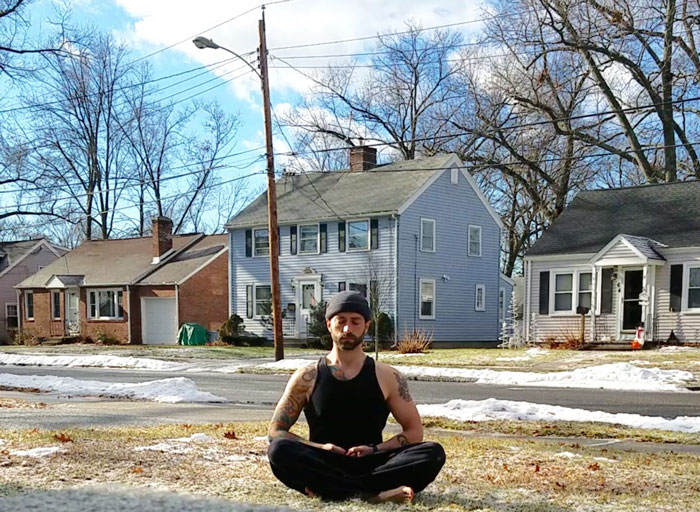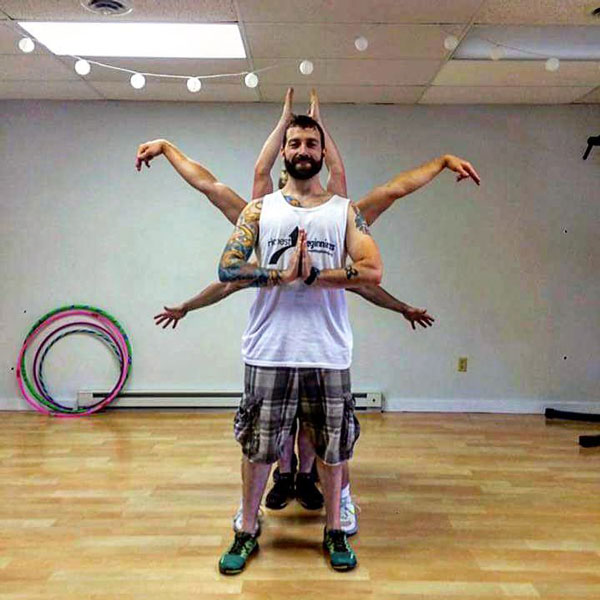
I grew up in the perfect storm of cheesy action movies and the rising star of Arnold Schwarzenegger. Visions of attaining the perfect physique filled my head, and snapshots of Arnold from Commando carrying a tree on his shoulder filled my vision boards. But as I grew older, I found that the oversimplified pursuit of a chiseled body was useless if I did not take the time to stop and smell the roses.
Many times, my younger self would feel guilty about taking a rest day or skipping a workout to spend time with family and friends. Unfortunately, it cost me quite a bit of time off due to injuries and overexertion. My approach was far from balanced, and was driven solely by ego. Even after those early injuries, I still could not see the error of my ways. It wasn’t until years later that I found a healthy, balanced approach that was able to relax my body and mind, while exercising them as well.
Discovering a technique known as Progressive Muscle Relaxation helped me find that balance. PMR is a technique for learning to monitor and control your muscular tension that was developed by Dr. Edmund Jacobson in the early 1920s. The main idea is to create tension in a specific muscle area, and then relieve that area of the tension. In doing this, you are able to monitor your body as it physically relaxes, and get a decent amount of muscle work in as well.
The technique is comprised of three parts: breath control, body scanning, and dynamic muscle tension. It is important to understand these aspects individually before trying to blend them together into a cohesive practice.
Breath Control:
The first thing to practice before diving into progressive muscle relaxation is breath control. There are a million and 20 articles and YouTube videos out there on breathing techniques and philosophies, all of which offer some interesting insight on the subject. For our purposes, we are going to focus on cyclical breathing, also known as square breathing.
The idea is basic in nature, but has a complex bodily reaction. To start, you should understand why it is sometimes called square breathing, it is simply because the breath has 4 parts to it: a 2 second inhale, a 2 second pause (this is not holding your breath, but rather a pause between inhale and exhale), a 2 second exhale, and another 2 second pause between exhale and inhale. It is sometimes called cyclical breathing due to the nature of the breath as it flows between each transition to form a circle (isn’t it cool how your breath can be both a circle and a square?). It is also an important image to hold when breathing, as it’s not just a breath in and out, but rather a breath in that goes to the lungs and diaphragm and then returns to complete a circle through your respiratory system with the exhale and pause. It is also of import to note that the breath is not shallow in nature – you are not breathing into your chest – you are breathing much deeper, into your diaphragm and lower dantian, which is at the center of your body, 2 inches below the navel, and 2 inches back inside the body.
Body Scanning:
The concept of the body scan has its origins in the history of meditation and prayer, as well as being revitalized recently with the mindfulness movement. Without delving too deep, it is the internal scanning of your own body, while in the practice of meditation, to notice stuck points of energy, emotions, or physical maladies. Generally, it is progressive in nature, as you have a fixed starting and end point. These points may vary, but generally it’s good to start at the top of your head, and work your way down toward the feet. A body scan can also vary in length of time as well. You can do a relatively quick scan focusing on parts of the body for 30 seconds at a time, and spending more time on areas in which you sense the sensation of stuck energy, or you can do a longer practice, spending a minute or two at each area, and allocating more time to any “stuck areas.”
Dynamic Tension:
The beginnings of dynamic tension have roots dating back to old-school strongman Charles Atlas. It’s a simple practice that literally pits muscle against muscle. Dynamic tension focuses on tensing the muscles of a certain body part and then moving said body part against the tension, utilizing isometric movements through a wide range of different muscles, and muscle relationships. This is the physical act of creating the tension aspect of progressive muscle relaxation. Picture the flexing techniques of a bodybuilder. Their routines utilize the ability to flex a specific part of the body, while relaxing other parts of the body at the same time.

Now that we have formed a basic idea of the individual aspects and concepts of progressive relaxation, let’s Voltron these bad boys, and focus on the practice itself.
Begin either standing, lying or seated. Whichever position, it is important to have a relaxed posture, maintaining a straight spine with arms and shoulders relaxed, and legs slightly bent.
Start with one big breath in and out, breathing down to your dantian. Then close your eyes and take ten more breaths focusing on the principles of square breathing. When you finish the tenth breath, begin your body scan at the top of your head, and work your way down the body, contracting your muscles at each point for 30 seconds as if doing an isometric hold. After thirty seconds, release, and focus on bringing breath to these muscles for an additional 30 seconds. Concentrate on feeling the blood flow to your muscles to nourish them. As you continue breathing you should feel your muscles becoming heavy and starting to relax.
As your mind/muscle connection improves, you will be able to feel your heartbeat/pulse within the blood flow to the muscles. Don’t be disheartened if you can’t yet, it takes a long time to get this feeling. Keep practicing and it will come with time. Generally, you follow this practice all the way down to your feet, hitting major and minor muscles groups on the way down including your nose, eyes, chin, throat, shoulders, biceps, triceps, forearms, hands, chest, back, abs, glutes, hamstrings, quads, calves, feet, etc.
When you reach the end of your body scan, take 10 breaths, followed by one deep breath and slowly exhale. When you feel comfortable, open your eyes if they are closed, and feel the weight of your body in a full relaxed state.
Just like anything, this practice can take time to develop and feel comfortable in, and often, when you are beginning, it is helpful to have someone guide you with auditory cues to help you focus and move through your body. Don’t be disheartened if you can not make it through your whole body with your first attempt, instead, when you next try the practice, focus on hitting the major muscle groups, and in time you can begin to refine and define the areas that you want to target.
These concepts of Progressive Muscle Relaxation, when married with concepts of exercise and dynamic tension, help to bring balance to our whole selves by exercising BOTH our bodies and minds. So in reality, you ARE able to relax but also get a good workout in at the same time, which gives a new definition to a rest day.

***
Steve Opalenik is a PCC instructor, licensed mental health counselor and calisthenics fanatic located in Massachusetts. He is the president of The Promethean Project (theprometheanproject.weebly.com). Connect with Steve on Facebook for more: facebook.com/prometheancounseling
